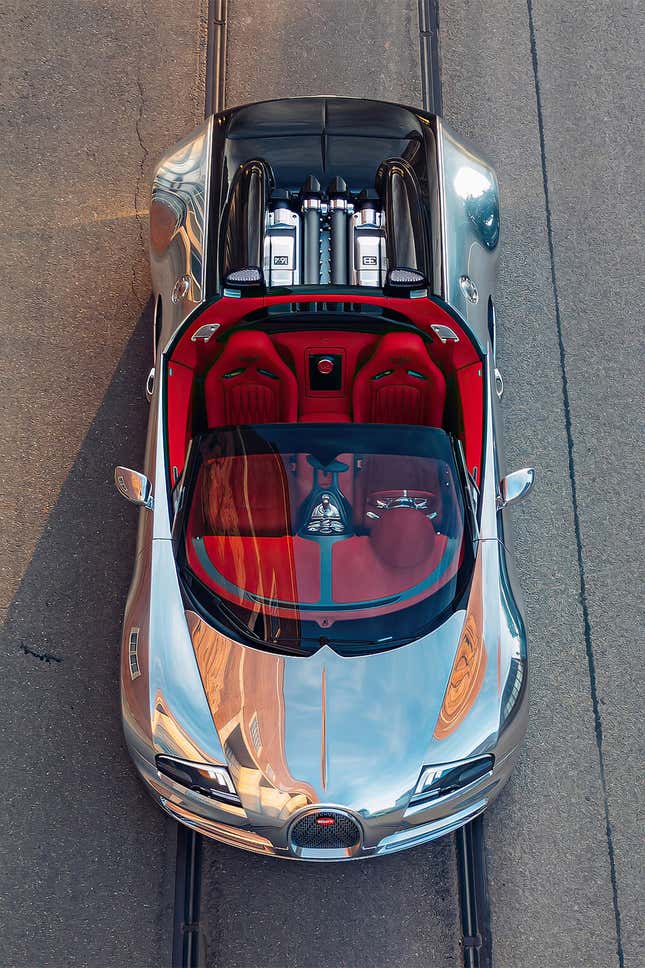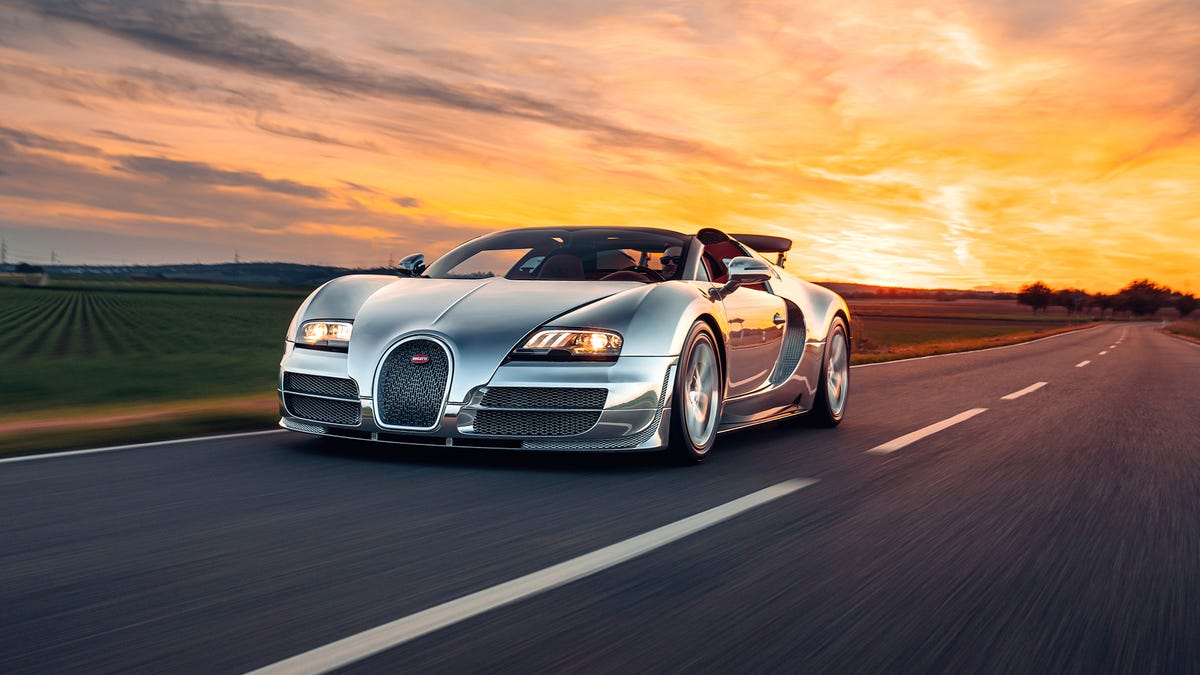It’s common for modern Bugattis to have hundreds of thousands of dollars in options, with some bespoke commissions through the Sur Mesure division costing seven figures on top of the already mega-expensive car. There is one Veyron that stands above the rest in this regard, and it was never before seen until a few days ago when German supercar specialists Mechatronik listed it for sale. This Bugatti Veyron Grand Sport Vitesse has body panels milled from individual blocks of aluminum, which costed more than the Vitesse’s $2.5-million price tag.
The earliest iterations of the Veyron were mere million-dollar cars, but the Vitesse commanded a price more than double that of the base car. It was the final evolution of the iconic supercar, a droptop version of the record-breaking Super Sport that itself became the fastest convertible in the world with a top speed of 254 mph. Out of the Veyron’s 450-car run, only 92 were the Grand Sport Vitesse. According to Mechatronik, in 2014 one of Bugatti’s most important clients wanted a Vitesse that would be “the most elaborate and fascinating version of what was possible at the time, the most special Veyron and the most extreme and unique version ever built.”

Inspiration came from the Veyron Pur Sang, of which five were produced in 2007. The Pur Sang had a carbon-fiber hood and center section with exposed polished aluminum fenders, bumpers and sides; a spectacular look. Head of design Achim Anscheidt and color and trim designer Laurent Chevalley thought a similar color and material split would look great and also “meet the customer’s request for a very clean design using original materials, preferably without paint, [and that it] would benefit most when combined with an eye-catching, contrasting interior.”
Depending on market regulations, some of the Pur Sangs had painted bumpers instead of matching aluminum ones, and because of the sheer size of the body panels some of them had to be welded together, which resulted in seams that were polished by hand but still visible. To the customer, those two things were unacceptable. In his order, he specified that apart from the carbon rear center, every body panel must be made from its own single piece of aluminum, including the hood.
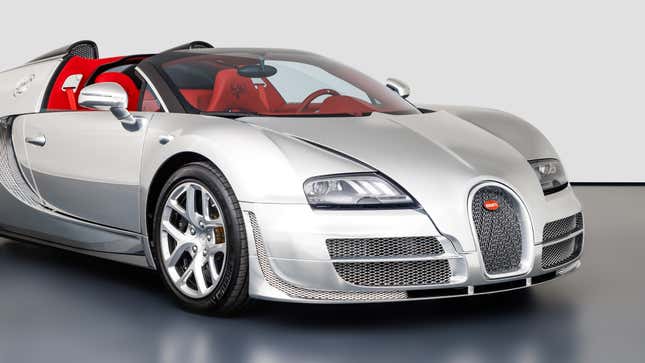
Bugatti had to write a new CAD program to figure out how to produce the car, and the company’s engineers in Germany calculated it would require more than 20 tons of aluminum blocks. Not only would production costs be “astronomically high,” it would also end up much more expensive than the already agreed-upon sales price, so Bugatti decided to tell the customer his order would be canceled and he’d have to come up with a spec that was “more practical.”
Upon receiving the news, the customer said that not only would he cancel all the other Bugattis he had on order, but he would never buy from the company again. Unless, of course, Bugatti would create the car to the original specifications, with any compromises being “categorically rejected.” I can hear you asking, “how many Bugattis could this guy have on order for that to matter to the company?” The answer, my friend, is a lot.
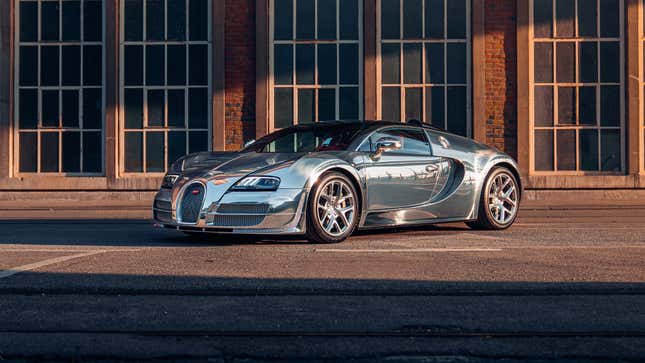
In addition to already owning a few Veyrons, he had put in orders for one of each of the six different Les Légendes de Bugatti special editions, which were all based on the Grand Sport Vitesse (and only three units of each one were made). He also had multiple Veyron Super Sports on order, and the reveal of the car’s Chiron successor was quickly approaching — surely he’d want some of those too. That’s at least $25 million’s worth of car.
Bugatti relented, and the car was built as originally envisioned. Each body panel was milled from a single aluminum block and then polished, and the carbon-fiber panels were made from 6K weave and aligned at 90 degrees, which was also difficult to produce at the time. Mechatronik says it was the “most extreme and time-consuming” Veyron ever made, and the cost of all the options ended up being greater than the Vitesse’s $2.5M base price.
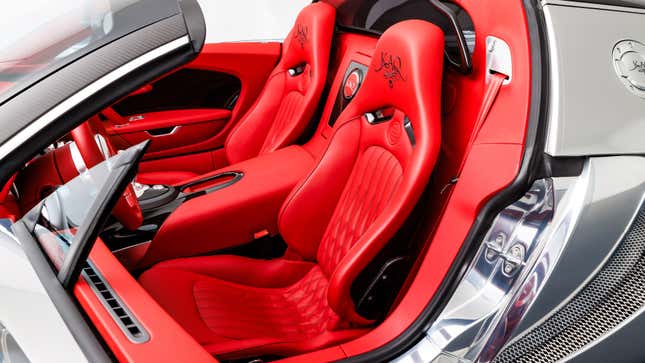
All of that paid off, I think — the car is just spectacular. The aluminum panels make it look like a spaceship out of a ‘60s sci-fi movie, with the natural reflections showing off how pure the Veyron’s design is. Beyond the bodywork, there are a number of other special touches. All of the grille mesh is polished, too, and the horsehoe grille has a special pattern with the owner’s initials (KAQ) repeating in a waterfall effect, a logo also found on the fuel caps and stitched into the headrests. The Carmine Red interior looks fantastic; the designers were right about the bright red contrasting against the aluminum.
This Vitesse has been in the care of its original owner since new, and it has only covered 750 kilometers. No price is listed. If you have to ask, you really can’t afford it.
